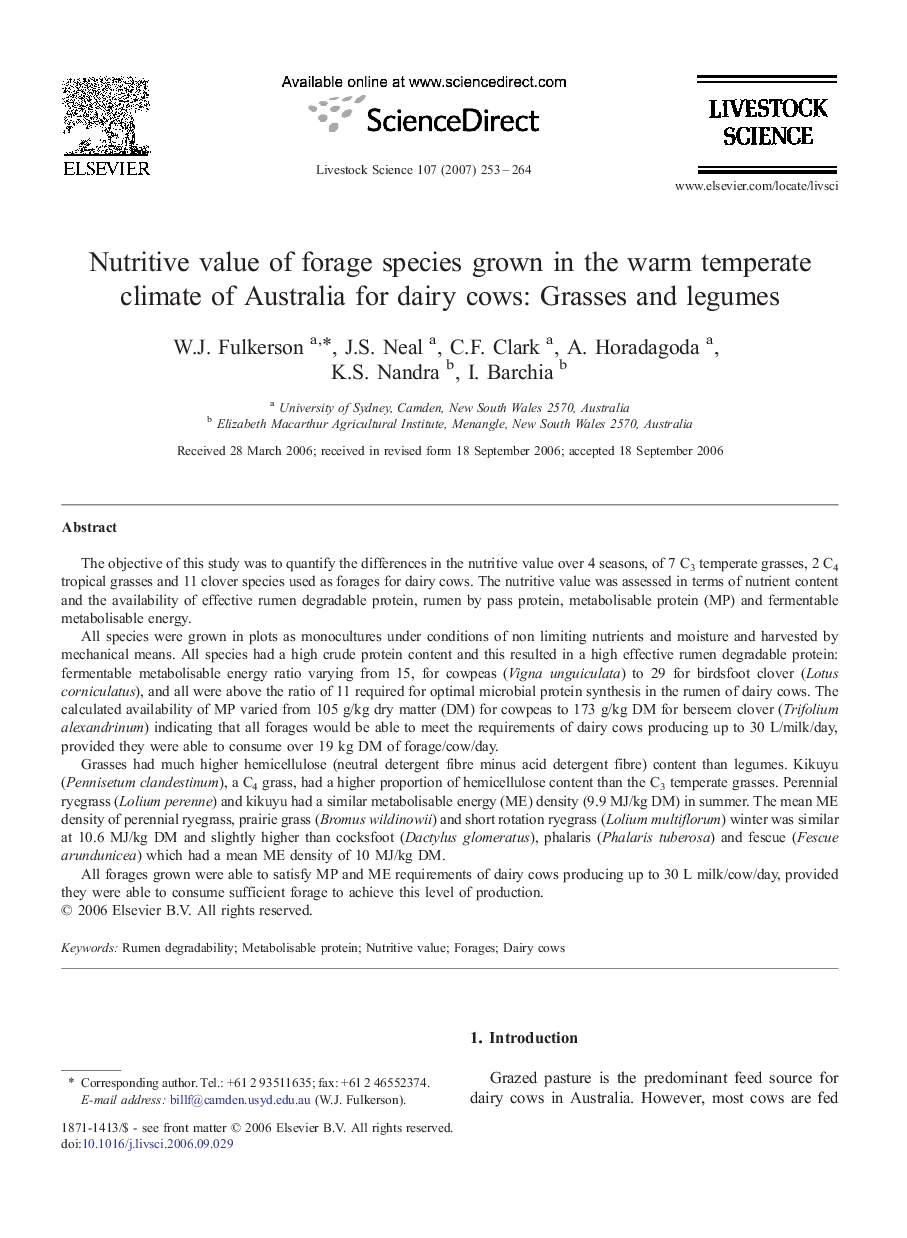| کد مقاله | کد نشریه | سال انتشار | مقاله انگلیسی | نسخه تمام متن |
|---|---|---|---|---|
| 2449057 | 1554027 | 2007 | 12 صفحه PDF | دانلود رایگان |

The objective of this study was to quantify the differences in the nutritive value over 4 seasons, of 7 C3 temperate grasses, 2 C4 tropical grasses and 11 clover species used as forages for dairy cows. The nutritive value was assessed in terms of nutrient content and the availability of effective rumen degradable protein, rumen by pass protein, metabolisable protein (MP) and fermentable metabolisable energy.All species were grown in plots as monocultures under conditions of non limiting nutrients and moisture and harvested by mechanical means. All species had a high crude protein content and this resulted in a high effective rumen degradable protein: fermentable metabolisable energy ratio varying from 15, for cowpeas (Vigna unguiculata) to 29 for birdsfoot clover (Lotus corniculatus), and all were above the ratio of 11 required for optimal microbial protein synthesis in the rumen of dairy cows. The calculated availability of MP varied from 105 g/kg dry matter (DM) for cowpeas to 173 g/kg DM for berseem clover (Trifolium alexandrinum) indicating that all forages would be able to meet the requirements of dairy cows producing up to 30 L/milk/day, provided they were able to consume over 19 kg DM of forage/cow/day.Grasses had much higher hemicellulose (neutral detergent fibre minus acid detergent fibre) content than legumes. Kikuyu (Pennisetum clandestinum), a C4 grass, had a higher proportion of hemicellulose content than the C3 temperate grasses. Perennial ryegrass (Lolium perenne) and kikuyu had a similar metabolisable energy (ME) density (9.9 MJ/kg DM) in summer. The mean ME density of perennial ryegrass, prairie grass (Bromus wildinowii) and short rotation ryegrass (Lolium multiflorum) winter was similar at 10.6 MJ/kg DM and slightly higher than cocksfoot (Dactylus glomeratus), phalaris (Phalaris tuberosa) and fescue (Fescue arundunicea) which had a mean ME density of 10 MJ/kg DM.All forages grown were able to satisfy MP and ME requirements of dairy cows producing up to 30 L milk/cow/day, provided they were able to consume sufficient forage to achieve this level of production.
Journal: Livestock Science - Volume 107, Issues 2–3, April 2007, Pages 253–264